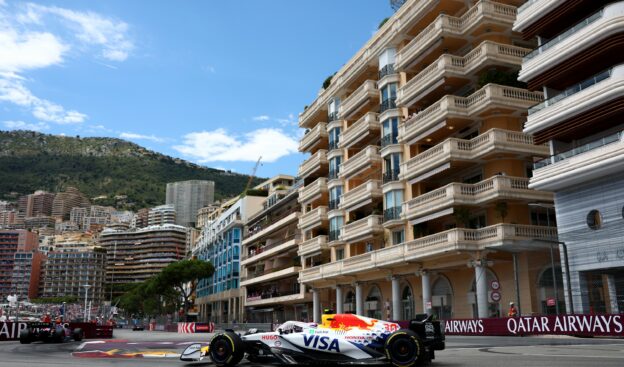F1 Car Size vs. Street Circuits: Should Monaco Push for Smaller Cars or Wider Streets?

The Monaco Grand Prix remains Formula 1's crown jewel, a race where drivers navigate the legendary 3.337-kilometer Circuit de Monaco through the principality's narrow streets at speeds exceeding 180 mph. The circuit's tight corners, elevation changes, and proximity to barriers create an atmosphere unmatched in motorsport, transforming everyday roads into the sport's most prestigious battleground since 1929. Monaco’s legendary status aside, could we see some changes made to this track post-2025 season?
The Impact of Modern F1 Car Dimensions on Monaco’s Tight Layout
Modern Formula 1 cars have grown substantially larger than their predecessors, creating a fundamental mismatch with Monaco's historic layout. Current F1 regulations allow cars to measure up to 5.5 meters in length and 2 meters in width, making them comparable in size to large SUVs like the Range Rover. These dimensions represent the largest cars in F1 history, weighing 798 kilograms including the driver. When these massive machines navigate Monaco's narrowest sections, particularly the 7.5-meter-wide tunnel and the tight hairpin at Fairmont, overtaking becomes nearly impossible without significant speed differentials or strategic errors.
The 2025 Monaco Grand Prix: Criticism and Challenges
The 2025 Monaco Grand Prix highlighted these ongoing challenges, with drivers struggling to find adequate overtaking opportunities despite possessing cars capable of extraordinary performance. The race featured minimal position changes during actual racing conditions, reinforcing long-standing criticism that Monaco has become a processional parade rather than competitive racing.
Fans and analysts closely monitor broader developments in Formula 1, including technical regulations, circuit changes, and driver line-ups, all of which influence race dynamics and betting markets throughout the season. For those interested in following these evolving factors and their impact on odds and predictions for upcoming races and future tracks, resources available on sites such as https://www.vegasinsider.com/ provide comprehensive coverage and analysis.
Looking ahead, the FIA's 2026 regulation overhaul offers potential solutions to Monaco's space constraints. The new technical regulations mandate cars that are 30 kilograms lighter, 1 centimeter thinner, and feature a 2-centimeter smaller wheelbase compared to current specifications. The FIA describes this as a "nimble car" concept designed to improve efficiency, handling, and crucially for Monaco, racing quality. These dimensional reductions, while seemingly modest, could provide additional maneuvering room on Monaco's constrained circuit.
Urban Planning vs. Historic Constraints
The alternative approach involves modifying Monaco's infrastructure to accommodate modern F1 cars. However, this solution faces significant practical limitations. Monaco's streets serve dual purposes as public roads and racing circuit, making permanent widening extremely challenging. The principality's dense urban environment, with buildings dating back centuries and limited available space, makes substantial infrastructure modifications prohibitively expensive and logistically complex. Even minor alterations would require extensive coordination with local authorities and potentially compromise the circuit's historic character.
Critics increasingly question whether Monaco deserves its place on the modern F1 calendar. The race's processional nature contrasts sharply with the wheel-to-wheel action seen at purpose-built circuits like Silverstone or Spa-Francorchamps. Television viewership data suggests fans prefer races with multiple overtaking opportunities and unpredictable outcomes, elements often absent from Monaco. Some argue that Formula 1's continued growth requires prioritizing competitive racing over historical significance.
Could Monaco Lose Its Place on the F1 Calendar?
Monaco's removal seems unlikely given its unique appeal and commercial value. The principality offers glamour, prestige, and marketing opportunities unmatched elsewhere on the calendar. Driver victories at Monaco carry special significance, with legends like Ayrton Senna's six wins and Lewis Hamilton's three victories cementing their legacies. The circuit tests different skills than traditional tracks, rewarding precision, concentration, and racecraft over pure speed.
The optimal solution likely involves the 2026 regulation changes combined with minor circuit modifications where feasible. Reducing car dimensions will provide immediate relief for overtaking challenges, while Monaco could explore selective barrier repositioning and corner optimization without compromising safety or character. This balanced approach preserves Monaco's historic significance while addressing legitimate concerns about racing quality.
Ultimately, Formula 1's future depends on balancing tradition with evolution, ensuring that iconic venues like Monaco remain relevant while delivering the competitive spectacle modern audiences expect.
✅ Check out more posts with related topics:













Monaco is going nowhere soon
Money talks
No income tax or vat hooky street, correct when they are generating so much cash there to pay any race fee
✅ Checkout the latest 50 F1 Fans comments.